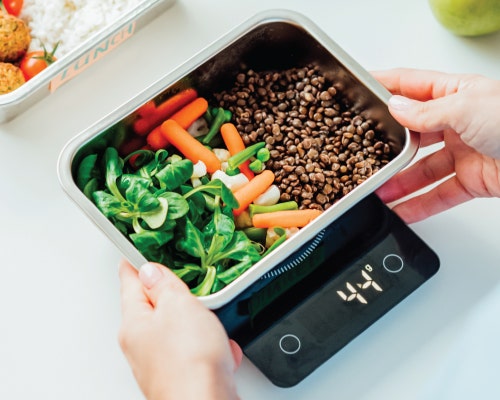Busting Myths About Protein Absorption
- 8/9/23


Protein is arguably the most important macronutrient we get from our diets, as the body cannot make the nine essential amino acids it needs to function. The amount of protein an individual needs can vary based on their age, physical activity, sex, overall health, and more.
But how should you consume that protein? Can you eat it all in one sitting or is it better to spread it out throughout the day?
Your protein needs
Your protein needs are individual and depend on a variety of factors. While there is a Recommended Dietary Allowance (RDA) for protein, this number should be seen as a minimum to maintain lean body mass. The RDA for men is 56 grams and 46 grams for women. This number is likely too low for most adults, as it does not consider body weight, physical activity, or other factors that can increase protein intake.
A better way to determine your protein needs is based on your body weight and goals. To do this you will need to first determine your body weight in kilograms. To do this, divide your body weight in pounds by 2.2.
Multiply your weight in kilograms by the recommended protein range:
- Normal weight sedentary adults: 1.2 to 1.8 grams per kilogram
- Normal weight active adults: 1.2 to 2.0 grams per kilogram
- Normal weight active adults for muscle gain: 1.2 to 2.4 grams per kilogram
- Overweight adults: 1.2 to 1.5 grams per day
Now that you know your protein goal, how should protein be spaced out throughout the day?
How much protein per meal?
There is quite a bit of controversy over how much protein can be absorbed in one meal. Older studies found that the body cannot absorb more than 30 grams of protein per meal and the rest is excreted in the urine. Additionally, eating too much protein at once was believed to negatively impact the body’s ability to build muscle.
Newer research found that while protein oxidation (breakdown) does go up after eating a high-protein meal, this did not impact protein utilization or absorption as much as was originally believed. Therefore, the 30 grams per meal recommendation may not be a hard and fast rule for most people.
When Should l Eat Protein?
How do you determine when you should eat your protein? First, meals high in protein are typically more satiating than meals that only contain carbohydrates. If you are trying to lose or maintain your weight, meals high in protein help you stay fuller longer so you eat fewer calories throughout the day.
If you work out, protein timing may also matter. A position paper by the International Society of Sports Nutrition recommends that athletes consume protein every 3-4 hours throughout the day. Since athletes have higher protein needs, spreading out the protein may help them meet their daily goals without feeling overly full.
High protein sample meal plan
If you are curious what a day of eating might look like for a 150-pound person to meet their protein needs, here is a sample meal plan. A 150-pound sedentary person needs between 82-113 grams of protein per day. Here is how you might spread it out throughout the day:
Breakfast
- 3 eggs (21 grams)
- 1 piece of whole wheat toast (3 grams)
Snack
- 1 scoop Garden of Life Organic Creamy Protein with Oatmilk (20 grams) mixed with water
Lunch
- 4 ounces salmon (32 grams)
- Salad with mixed greens
Dinner
- 4 ounces of grilled chicken (32 grams)
- 1 cup asparagus (3 grams)
Total: 111 grams
With this meal plan, the protein is spread out throughout the day to ensure you stay satisfied all day long to prevent overeating. Remember, not every meal plan works for every lifestyle or personal goal, so be sure to tailor your protein intake to your individual needs.
References:
-
Nutrient Recommendations and Databases. (n.d.). Retrieved May 30, 2023, from https://ods.od.nih.gov/HealthInformation/nutrientrecommendations.aspx
-
Thomas, D. T., Erdman, K. A., & Burke, L. M. (2016). American College of Sports Medicine Joint Position Statement. Nutrition and Athletic Performance. Medicine and Science in Sports and Exercise, 48(3), 543–568.
-
Layman, D.K. (2009) Dietary Guidelines should reflect new understandings about adult protein needs. Nutr Metab (Lond) 6, 12.
-
Schoenfeld, B. J., & Aragon, A. A. (2018). How much protein can the body use in a single meal for muscle-building? Implications for daily protein distribution. Journal of the International Society of Sports Nutrition, 15, 10.
-
Westerterp-Plantenga, M. S., Lemmens, S. G., & Westerterp, K. R. (2012). Dietary protein - its role in satiety, energetics, weight loss and health. The British Journal of Nutrition, 108 Suppl 2, S105–S112.
-
Jäger, R., Kerksick, C. M., Campbell, B. et al. (2017). International Society of Sports Nutrition Position Stand: protein and exercise. Journal of the International Society of Sports Nutrition, 14, 20.





